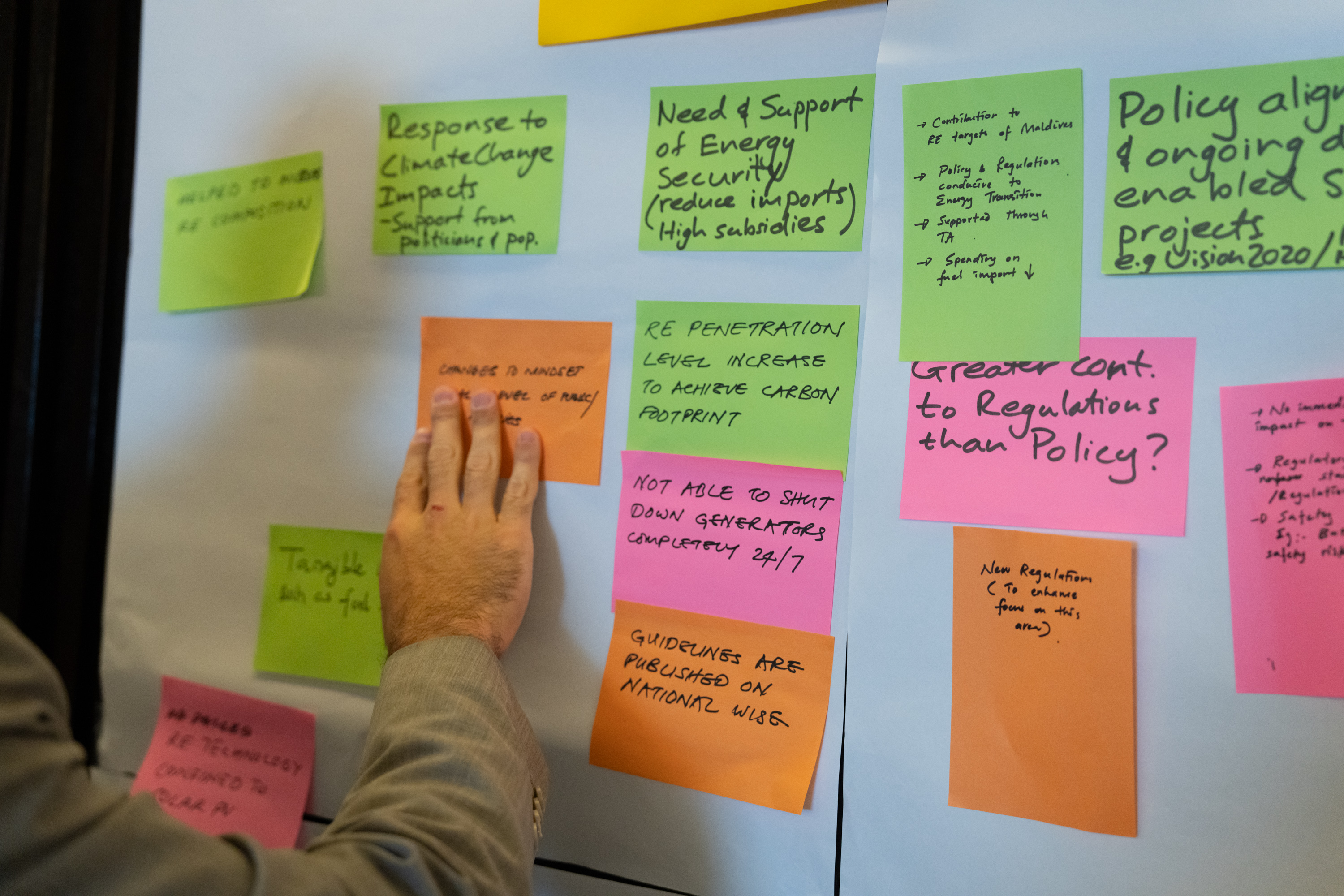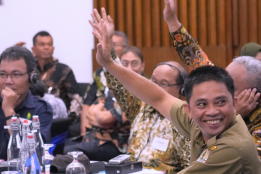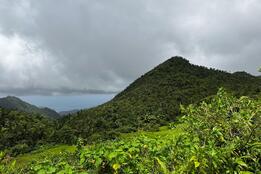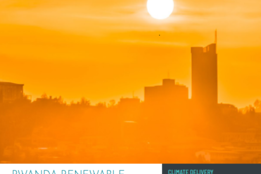The Maldives has become a model for other small island development states to learn from. Through CIF’s early investments, the country has transformed its energy profile by increasing its energy independence and is now scaling its early successes.
With more than a thousand islands spread across 860 kilometers of pristine coral atolls, the Maldives is most often famed for its natural beauty. It is now also a model for accelerated clean energy transitions across vast and challenging spatial dispersions. As such, the Maldives offers key lessons, particularly for other small island developing states (SIDS), on how to replicate the successes it has achieved.
Through the catalytic change effected by the Government of the Maldives, in partnership with the Climate Investment Funds (CIF), the Asian Development Bank (ADB), and the World Bank, the country has reduced its dependence on imported fuel and expanded access to clean and reliable energy at scale.

The Government of Maldives’ Investment Plan for CIF’s Scaling Up Renewable Energy for Low Income Countries Program (SREP) was approved in 2012, with the ADB and the World Bank as implementing partners*. With all projects at, or nearing, completion we convened government and multilateral development bank (MDB) partners, as well as other stakeholders for the first end-of-investment plan process, or an “Investment Plan Close Out” meeting in Male.
The meeting sought to understand how the Maldives transformed its energy market. It also served as a final stock-take of results and impacts and showed how the government not only delivered on its energy transition objectives, but also established crucial institutional, economic, and societal conditions for the exponential uptake and proliferation of renewable energy technologies. The investment plan boosted renewable energy capacity, helped create and expand a nationally viable solar market, and will replace 27 million liters of diesel combustion annually. But the story doesn’t end there. SREP catalyzed follow-on investments and capitalized on new technologies, including financing under our Clean Technology Fund that will scale up what SREP in the Maldives has created.
A country-led process
The close-out process is part of our hallmark “programmatic approach” which puts countries at the center of designing and delivering their investment projects. Not only do countries take the lead in creating plans that support their national development objectives, the close out process also ensures that various stakeholders are included, consulted and that their perspectives are also captured. The end-of-investment plan meeting in Male brought together representatives from relevant government ministries, state utilities, and outer-island communities to provide feedback, draw out shared lessons, and validate the investment results.
The results show how the government delivered on their primary objectives, as well as established institutional, economic, and social conditions for the exponential uptake of renewable energy technologies. SREP facilitated a groundbreaking proof-of-concept and demonstrated the economic viability of solar PV on a small island state, and crowding-in private sector capital.
Here are some of the key results from our SREP investments in Maldives:
- A surge in solar capacity
To date, CIF-funded projects have resulted in 19 megawatts (MW) of new solar PV capacity, with 27 MW more on the way. This is helping to push the share of renewable energy capacity from less than 1% in 2012 to almost 24% in 2026, even as energy demand more than doubled over the same period. Nuzuhath Ahmed from the Ministry of Climate Change and Environment in the Maldives explains how significant SREP’s contribution has been:
- Increased energy independence
Less demand for diesel meant cutting the expensive diesel subsidies and incorporating more inexpensive solar energy. This also led to cutting emissions which is a clear win for the country’s economic and environmental goals. And as SREP lead, Jimmy Pannett, explains, the extraordinary achievement in the Maldives is the enormous strides it has made towards energy independence.
- Catalytic effects of CIF’s investments
By driving down clean energy costs and unlocking additional private sector finance, solar energy not only became commercially viable, but also cheap. Diesel-based electricity currently costs approximately 23 cents per kilowatt hour, whereas solar costs less than half that at 9.88 cents. The falling costs were spurred by innovative financial mechanisms, including multi-tier risk mitigation measures and an internationally attractive tendering architecture. SREP investments amounted to $25.6 million but ultimately mobilized $139 million more in co-financing.- Improving regulatory and institutional capacity
Key to attracting private sector interest was the significant institutional capacity CIF’s investments helped build. International experts trained personnel within the Department of Energy and relevant regulatory bodies in new renewable energy regulations for example, while critical staff took part in learning visits abroad to see state-of-the-art technologies in action. As a result, the investment helped establish fundamental national standards and regulations for renewable energy.
- Creating wider development impacts
New solar energy capacity, coupled with grid efficiency improvements have enhanced the reliability and quality of electricity in the Maldives and created knock-on benefits for local businesses and communities. The Maldives investments also consciously created benefits for women and vulnerable groups including technical training to encourage women to take on roles in the energy sector, and work with women’s development committees. As Nuzuhath Ahmed notes, “We want to ensure that a specific part of [new green] jobs go to women.”
Setting off a solar chain-reaction
These successes are enabling the government to plan a further scale-up, with exponentially greater renewable energy targets and yet greater technological ambition.
The first tender to include “floating” solar farms is already in the works. The ADB and the World Bank are currently awarding battery energy storage system (BESS) contracts that add a combined volume of 80 MWh, spread across 35 islands, expected to enable 30-50 MW of solar capacity additions and trigger a cascade of further solar developments to over 100 additional islands.
Sergio Ugarte, International Energy Sector Expert supporting the government, notes: “By the end of next year, the outer islands will reach almost 13% of renewable energy share. And that constitutes the backbone for future developments. And it will not be too difficult after having constructed this backbone to make these outer islands to go from 13 % to 25, 30, 40 % in the next years.”
The Maldives continues to build its energy independence, as its solar capacity expands and its fossil fuel dependence wanes, the future looks bright for this small island development state and the examples it has set for other SIDS to follow.
* Projects: Preparing Outer Island Sustainable Electricity Development (POISED) project, and the Technical Assistance: Republic of the Maldives Capacity Development of the Maldives Energy Authority project implemented by the Asian Development Bank. The Accelerating Sustainable Private Investments in Renewable Energy (ASPIRE) project implemented by World Bank.
** The Maldives SREP Investment Plan Close-Out meeting was held from May 13 – 17, 2024 in the capital, Male.





